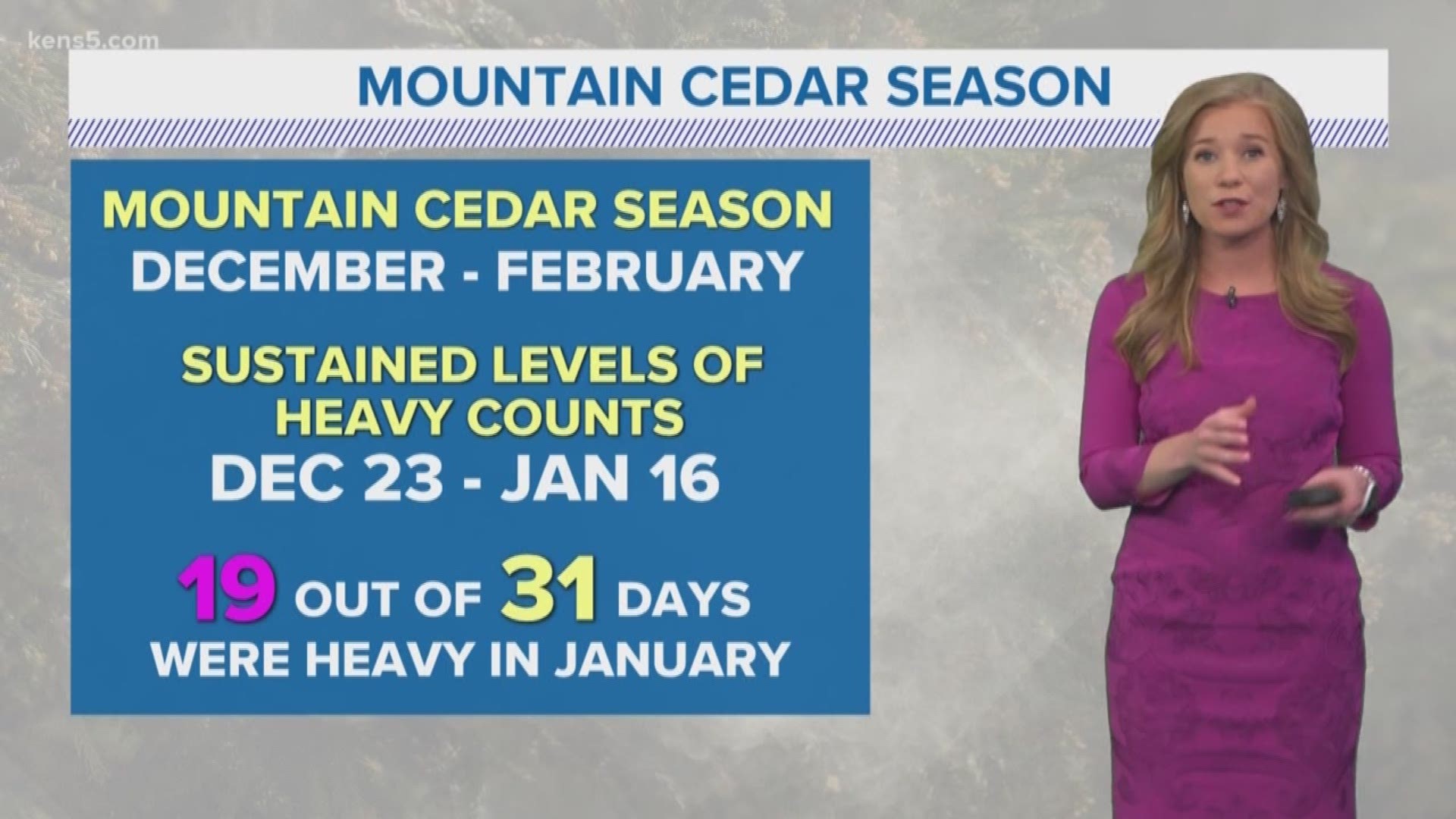SAN ANTONIO — See you later, cedar!
You may have noticed that mountain cedar has not been showing up in our KENS 5 Allergy Reports here lately. Peak mountain cedar season runs from mid-December through mid-February when ashe juniper trees are the healthiest. We typically see heavier amounts of mountain cedar when cold fronts move through and we have a north wind.

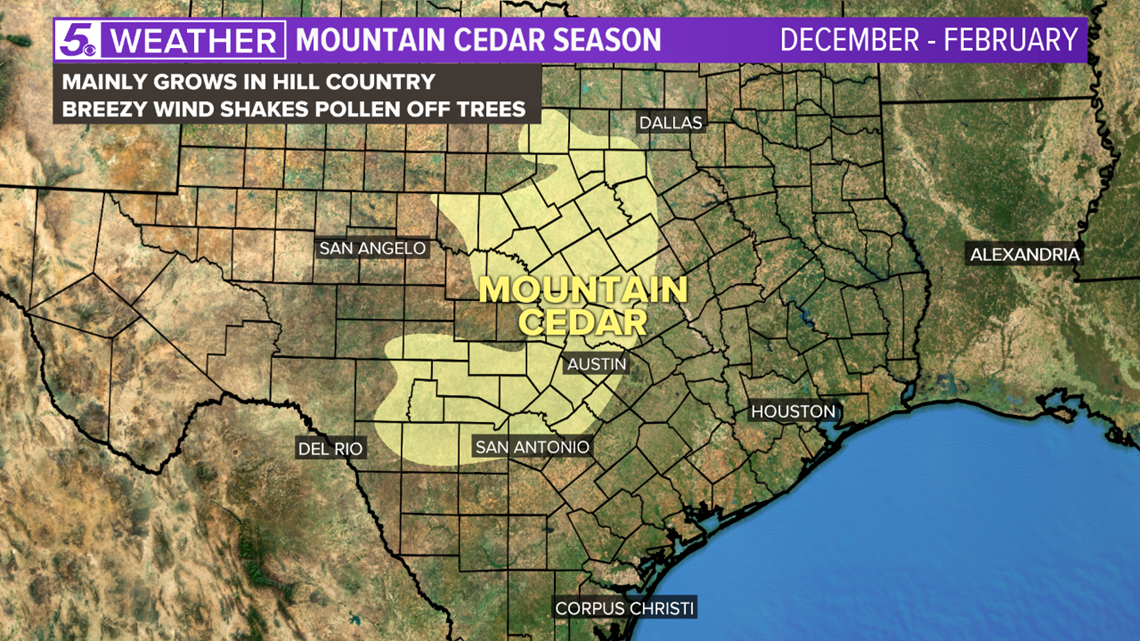
A north-northwest wind can transport the dusty, yellow pollen to South Texas late fall into winter—blanketing cars and outside furniture, and messing with our allergies.
How did this cedar season compare to others? It was a typical season, but significant from Dec. 23 through Jan. 16, when the metro experienced sustained heavy counts of mountain cedar.


Mountain cedar started to sneak into our pollen counts more in early December. Counts quickly turned heavy by mid-December.

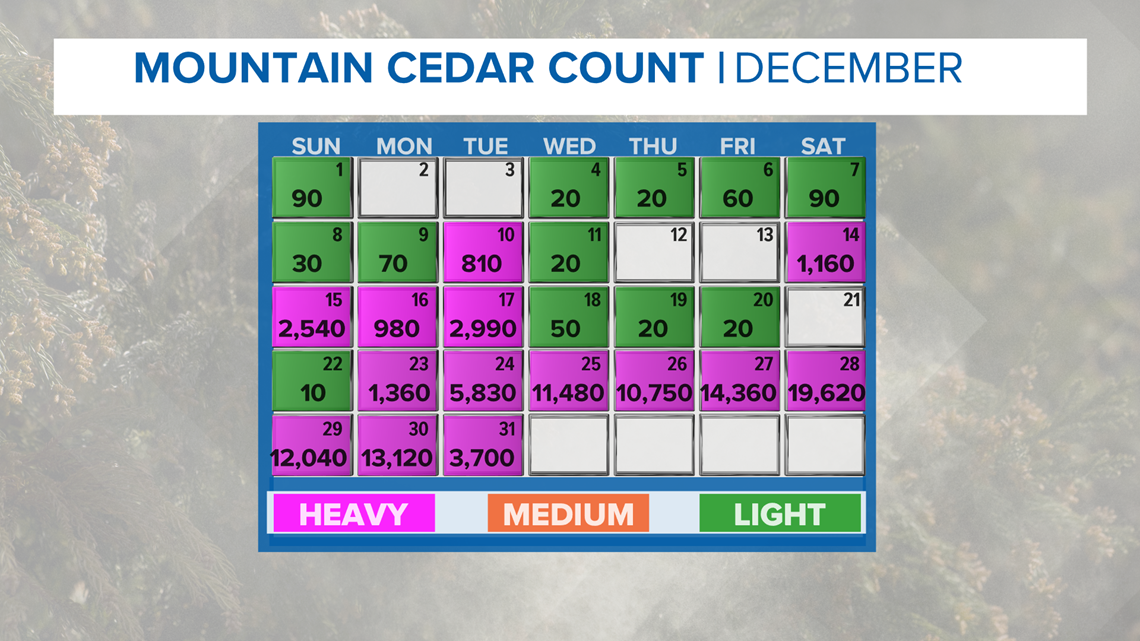
RELATED:
Mountain cedar remained heavy as we rang in the New Year. In fact, mountain cedar was heavy 19 out of 31 days in January.

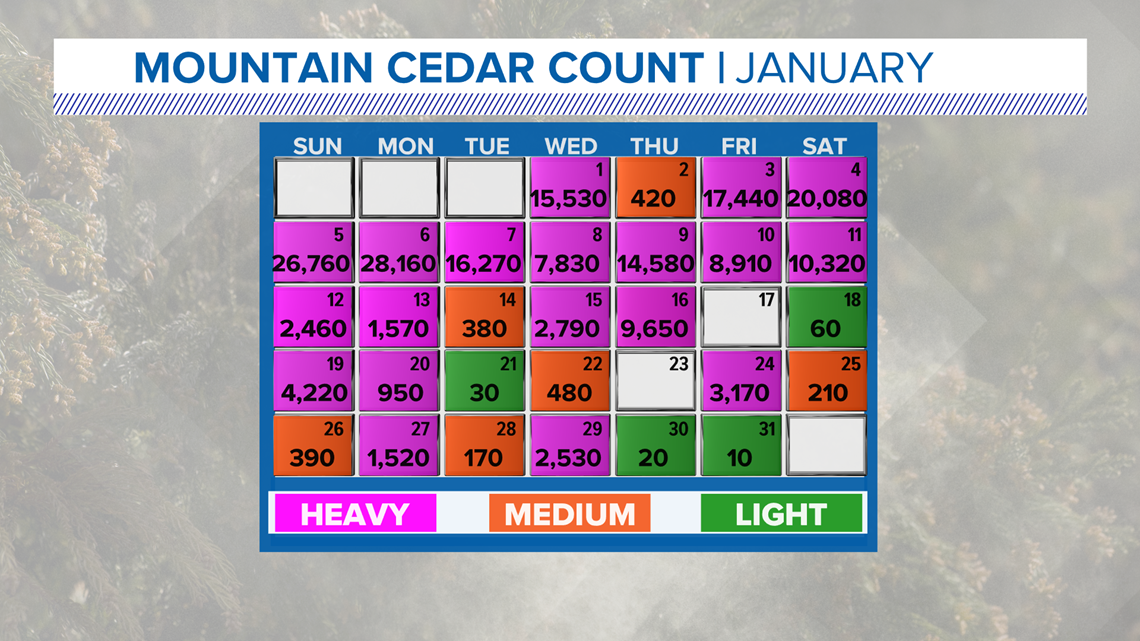
There are more light counts of cedar present this month, which means less sneezing!

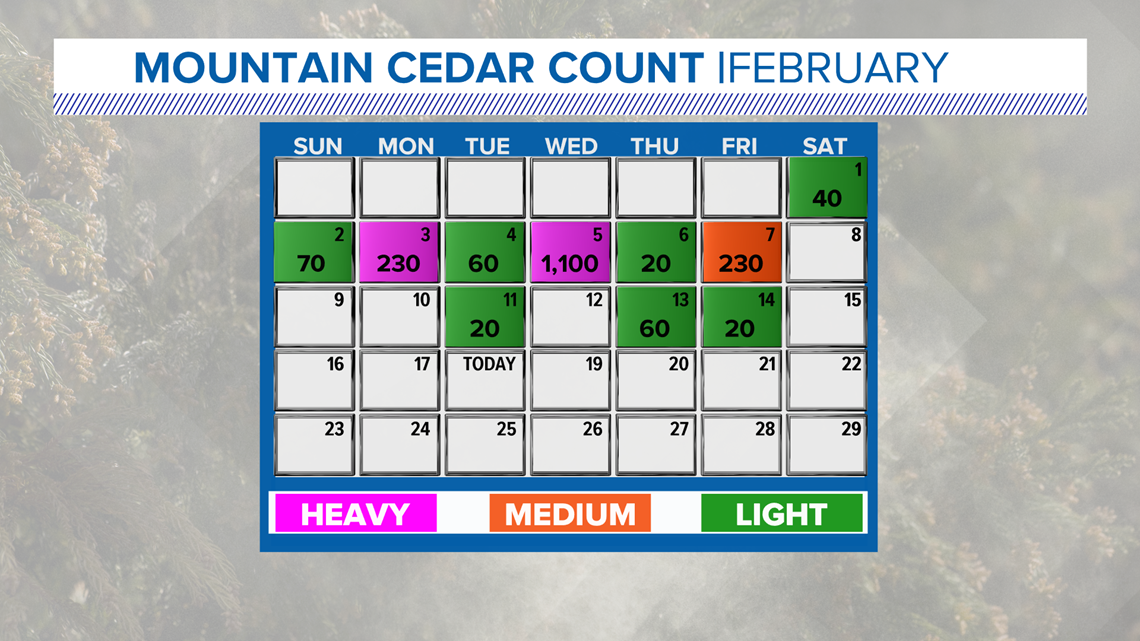
So, what's next? Spring tree season with oak the major allergen, according to KENS 5 Pollen Expert, Shannon Syring. We typically see more oak on our Allergy Reports from early March through mid-April.

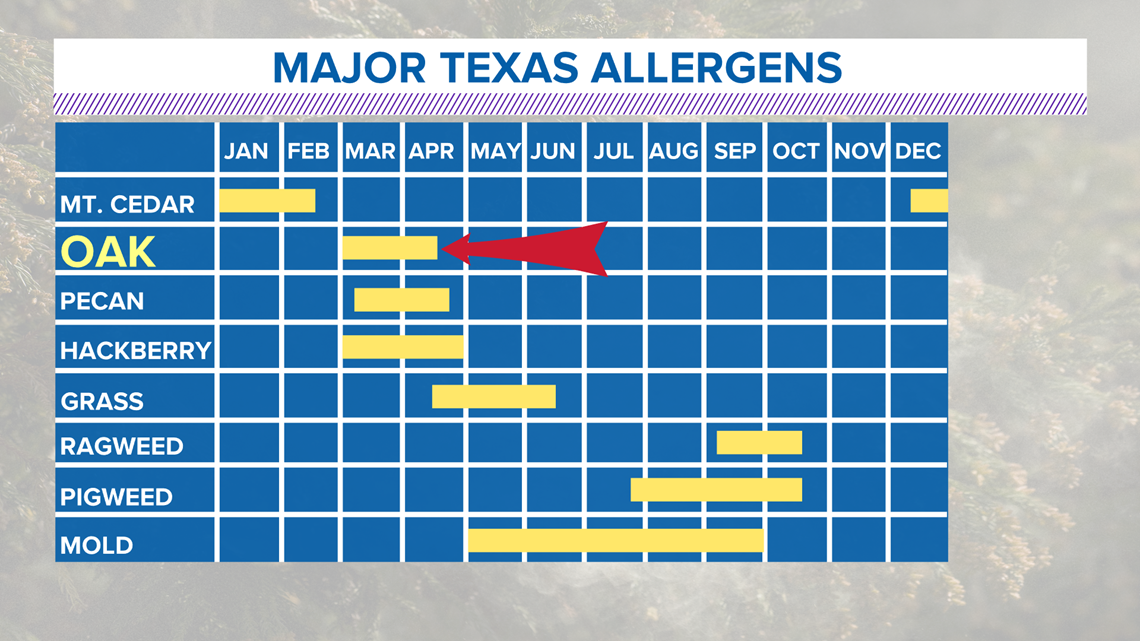
Keep in mind: Cedar may pop up on our Allergy Reports from time to time in late winter.
Don't forget you can download the KENS 5 app for the latest news and weather information each day while you are on the go.
PEOPLE ARE ALSO READING:

